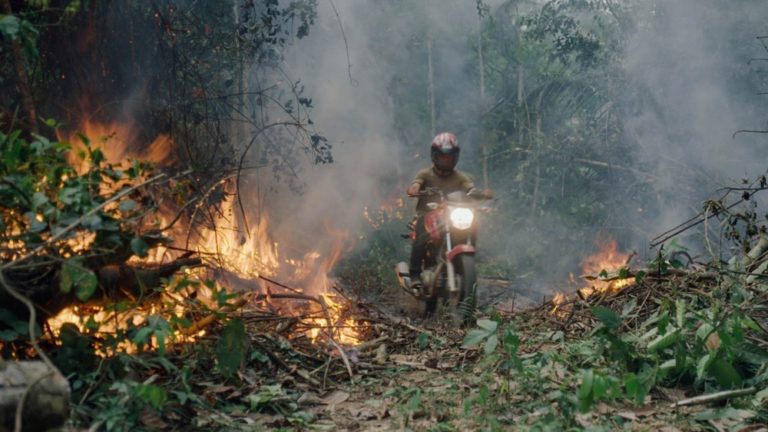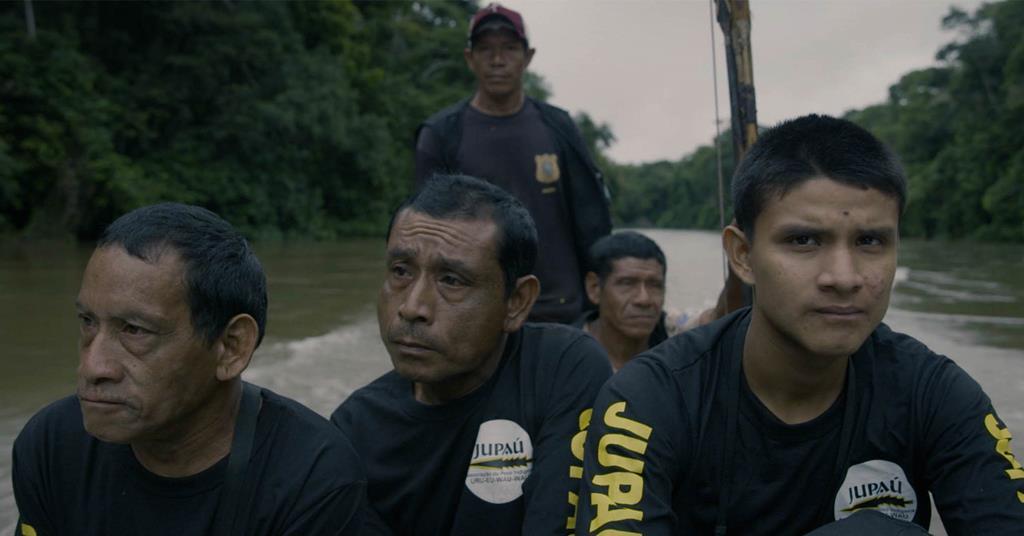
Alex Pritz’s feature film debut The Territory — that premiered in the World Cinema competition at Sundance 2022, where it won both the Audience Award and a Special Jury Award for Documentary Craft — is currently part of the programme of the EarthX Film Festival.
The titular land is the one belonging to the Uru-Eu-Wau-Wau, the indigenous people of Brazil living in the state of Rondônia. The story starts in 2018 when Jair Bolsonaro was still a presidential candidate and continues up until August 2020, in the midst of the Covid pandemic. At the beginning of the narrative less than two hundred natives remain. As the film progresses, audiences witness the way the lives of the people captured by the camera have evolved.

While a network of Brazilian farmers seizes this territory for profit, a group of natives must find new ways to fight back and protect the Promised Land. Gradually we get acquainted with the different factions who compete for this part of the rainforest that is being violently affected by deforestation. On one side the indigenous people try to protect it, on the other the land grabbers want to exploit it. We follow the calamities of five people: each of them feel entitled to own this section of the Amazon, but only a few truly care about its well-being. Bitate is an Uru-eu-wau-wau tween who is the chosen leader of his tribe; veteran environmental activist Neidinha is one of the most passionate defenders of the Uru land; surveillance head Ari will sacrifice his life to defend this environment; farm worker Sérgio leads the Associação Jupaú of Rio Bonito’s rural producers in the hope of owning his own agricultural business; settler Martins feels he has every right to claim the territory.

As one of the characters explains, the circumstance depicted in The Territory unravels like a Western movie: there is a group of pioneers leading the way, then others come to settle the land. On top of this, the political climate does not favour the Uru-Eu-Wau-Wau people as Bolsonaro becomes president and his violent rhetoric encourages more attacks against indigenous environmentalists. The Uru-Eu-Wau-Wau ultimately resort to technology, with drones to find invaders and cameras to show to the entire world the wrong-doing carried out on their land. The media becomes their weapon, communicating through their native language to preserve their culture.
Alex Pritz, who is specialised in humans relationship with the natural world creates a cinematic social commentary that transcends the region at stake. The condition of the Amazon is not an issue that pertains to Brazil alone, it is the heart of the world. As one of the Uru men points out, the rainforest is the only thing saving the planet and if it’s cut down temperatures will rise to 5 C°.
Throughout the film an admonishing hymn is chanted by the indigenous people that reflects the current affairs through the stories of the elders: “Dragons eat the forest, now nothing will grow and those who live within it, where can they go? Forest dwellers, rubber toppers, sloths, anteaters and turtles too, running for their lives, but what can they do?”
The protectors of the land somehow echo the theme of the 1992 animated musical fantasy FernGully: The Last Rainforest. Although this film was set in the Australian forest it shares the same plight of the Amazon indigenous people, since the protagonist fairy meets a human logger and together they join forces to save the rainforest. This environmental classic, that celebrates its 30th anniversary is also part of the 2022 EarthX Film Festival’s line-up and, just like The Territory, it champions the fight in defence of the Earth and an ecosystem that lives deep in the forest.
Final Grade: B+
Check out more of Chiara’s articles.


